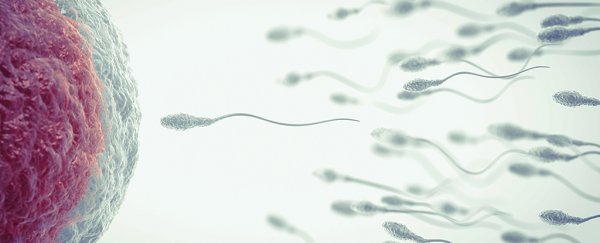The sperm's tail is perhaps one of the most iconic structures among all of the cells in the human body, so it's odd to think there are still some things we don't know about it.
It turns out there is a weird kind of helix right at the very tip of the tail nobody has noticed before. The researchers responsible for the discovery are yet to work out what it does, but figuring it out could help us understand why some sperm are better swimmers than others.
Researchers from the University of Gothenburg in Sweden and the University of Colorado used an imaging trick that combines electron microscopy with the 'slice-by-slice' action of CT scans.
Called cryogenic electron tomography, the process produces high detail snapshots of objects down to the nanometre scale that can be recombined into a 3D image.
"Since the cells are depicted frozen in ice – without the addition of chemicals which can obscure the smallest cell structures – even individual proteins inside the cell can be observed," says molecular biologist Johanna Höög from the University of Gothenburg.
Höög and her team used the Nobel prize winning method to get a close-up look at the protein structures inside the tail, or flagellum, of the humble human spermatozoon.
Most of what we know currently about the whip-like extrusions that serve cellular motors come from studies on microscopic organisms such as protists.
Flagella such as those that drive sperm cells consist of three sections – the mid piece, which contains the mitochondrion, the principal 'propeller' section, and a small terminus at the tip.
The propeller consists of a complex of rod-like microtubules called dMTs interlinked with moving proteins.
The interactions between the proteins and the microtubules make the flagellum flick in a controlled fashion, wiggling the sperm through its environment.
"The movement of thousands of motorproteins has to be coordinated in the minutest of detail in order for the sperm to be able to swim," says Höög.
In scanning its structure, the researchers turned their attention to the end of the tail containing the terminus.
Extending about a tenth of the way down the flagellum, inside the hollows of each of the microtubules, was a cellular structure nobody had described seeing previously – a helix that wound in a left-handed spiral.
 (University of Gothenburg)
(University of Gothenburg)
Because scientists can't help themselves, they came up with the perfect acronym for this novel helix: a Tail Axoneme Intra-Lumenal Spiral.
Or … wait for it … TAILS.
What the TAILS does inside the flagellum's microtubules is anybody's guess. The researchers do have their suspicions, however.
"We believe that this spiral may act as a cork inside the microtubules, preventing them from growing and shrinking as they would normally do, and instead allowing the sperm's energy to be fully focussed on swimming quickly towards the egg," says lead author of the study Davide Zabeo from the University of Gothenburg.
The researchers also speculate in their study that the structure could also help steer the sperm in the right direction or enable them to swim rapidly.
No doubt more research will help clear up its role in sperm motility.
Knowing all we can about what makes a sperm healthy could show us why some of these DNA delivery systems just aren't making the grade.
While there are numerous causes of infertility among men, abnormal tails – or ciliopathy as it's known – is known to be a contributing factor in many cases.
Staring down the barrel of a potential global male fertility crisis, every little bit could help us diagnose and treat those with slow sperm.
It also makes you wonder just how many other hidden structures there are inside our bodies waiting to be discovered.
This research was published in Scientific Reports.
